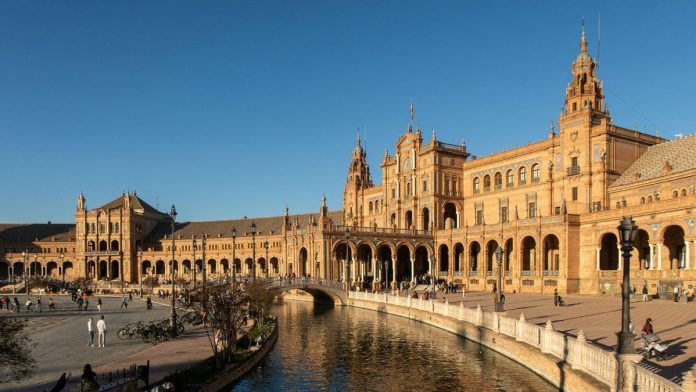Game of Thrones, La Casa de Papel, Elite, Black Mirror, and Almodóvar’s movies, the list of major international productions shot, in total or partially, in Spain has continued to grow lately.
It has also led to the event of cinema and tv tourism within the country as people travel to see the locations where their favourite movies and shows were shot.
“Before it was more like individuals who were superfans of a movie, so that they were travelling mostly south of Spain within the desert where westerns were filmed or in Seville within the footsteps of Star Wars, but now it’s becoming increasingly more popular,” explains Diego Santos, professor of tourism at EAE Business School of Madrid.
“There was an even bigger trend previously years around movie tourism. This area of interest is growing very fast.”
The primary study of its kind in Spain, Spain of Film: trends in cinematographic tourism, confirms this trend. 4 out of ten respondents recognised that culture is considered one of the good motivations for travelling. One in ten revealed that they’ve planned a getaway to somewhere that has been used to film a movie or TV show.
“The expansion potential of the sort of tourism is large with the rise of massive streaming platforms like Netflix and their ability to arouse in thousands and thousands of viewers the interest in landscapes and cultures all over the world,” says Ana Alonso, director and founding father of The Travelling Set, Spain’s first consulting firm specialised in film tourism.
The study found that Madrid was town where a movie, series or documentary was most ceaselessly mentioned through the visit (28.1 per cent), followed by Almería (22.6 per cent) and Seville (15.3 per cent).
“The challenge is now to develop an expert offer, market it, and stimulate demand. In comparison with the UK, which is a pacesetter on this sector, there are still few proposals of this type in Spain. It’s kind of like at first of wine tourism,” Alonso adds.
Film tourism is a rapidly developing area of interest
Growing demand has led to the creation of an industry specifically linked to film tourism. Firms are beginning to work with tour operators to draw travellers inquisitive about tourism based on cinema and TV series.
“It is not nearly going to places or visiting the predominant locations where movies were recorded, but more about linking cinema to town’s history,” explains Aubry Minotti, founding father of Lorens, a consulting firm which works through the tour operator channel and travel agencies. “These are more tourist experiences where the film illustrates, extends, and completes a tourist discourse and ultimately redraws the outline of a tourist product through cinema.”
The experiences on offer are diverse and might include night screenings, themed dinners at restaurants, sewing workshops, viewing film costumes or doing a film-themed teambuilding experience.
“Through screen tourism, you’ll be able to discuss culture, gastronomy, natural heritage, cinema, or fiction that leads you to a spot for a reason related to the stories you have seen at home,” says Alonso, who has already developed guides for cinematographic routes through the locations chosen by big productions. “The probabilities are huge.”
Spain is already a well-liked filming location
Spain has at all times been a well-liked place for filming, due to its climate – short, mild winters, low rainfall, and greater than 3,000 hours of sunshine per 12 months in some regions – and the range of its landscapes, from the arid desert to the plush forest or the Mediterranean Sea.
Within the Sixties, Almería got here into the highlight after Italian director Sergio Leone chosen the Tabernas desert because the setting for his famous Spaghetti Westerns, similar to The Good, the Bad, and the Ugly.
“Spain has been using movies as a way of promoting tourism for a long time,” says Santos. “Nevertheless, today, knowing that our tourism model seems to not be probably the most socially sustainable, each area of interest that helps us to maneuver from spaces which are highly concentrated with touristification and massification to other spots is de facto necessary.”
Since 2020, the Spanish government has also been offering tax credits of 30 per cent for the primary million euros spent and 25 per cent for the remaining to draw international film productions. Public filming permits have been made easier, and the method for granting visas to international production crews has been simplified. These productions are actually generating an economic impact of €1.32 billion, in accordance with the Spain Film Commission.
And, as an indication that Spain is emerging as a top destination for this growing trend, the primary European congress on film tourism shall be held next month in the country.
Could this be an answer to mass tourism?
At the identical time, protests against mass tourism have been underway in Spain since last 12 months. Locals have complained concerning the negative impact on their lives, starting with a severe housing crisis accentuated by short-term rentals.
Last summer, tourists were even sprayed with water guns in Barcelona. Could this recent sort of tourism provide an answer?
“For us, screen tourism is a recent way of doing things, more connected to sustainability,” Alonso says. “It is a sort of tourism that may not tied to a particular time of 12 months, like going swimming on the beach is, and it also allows us to redirect traffic to places you never thought you’d visit.”
It’s a vision shared by Lorens, which offers tours to several locations across Spain.
“These clients want, after all, to see the predominant monuments, but as soon as we take them to a secondary place that the cinema has highlighted, you get wows that come out on a regular basis,” said Minotti.
Unlock the world’s wonders with unforgettable journeys tailored just for you! Whether you crave sun-kissed beaches, thrilling adventures, or rich cultural escapes, your dream destination awaits. Enjoy seamless travel with expert tips, exclusive deals, and handpicked experiences that Turn Every Trip into a lifetime memory.










